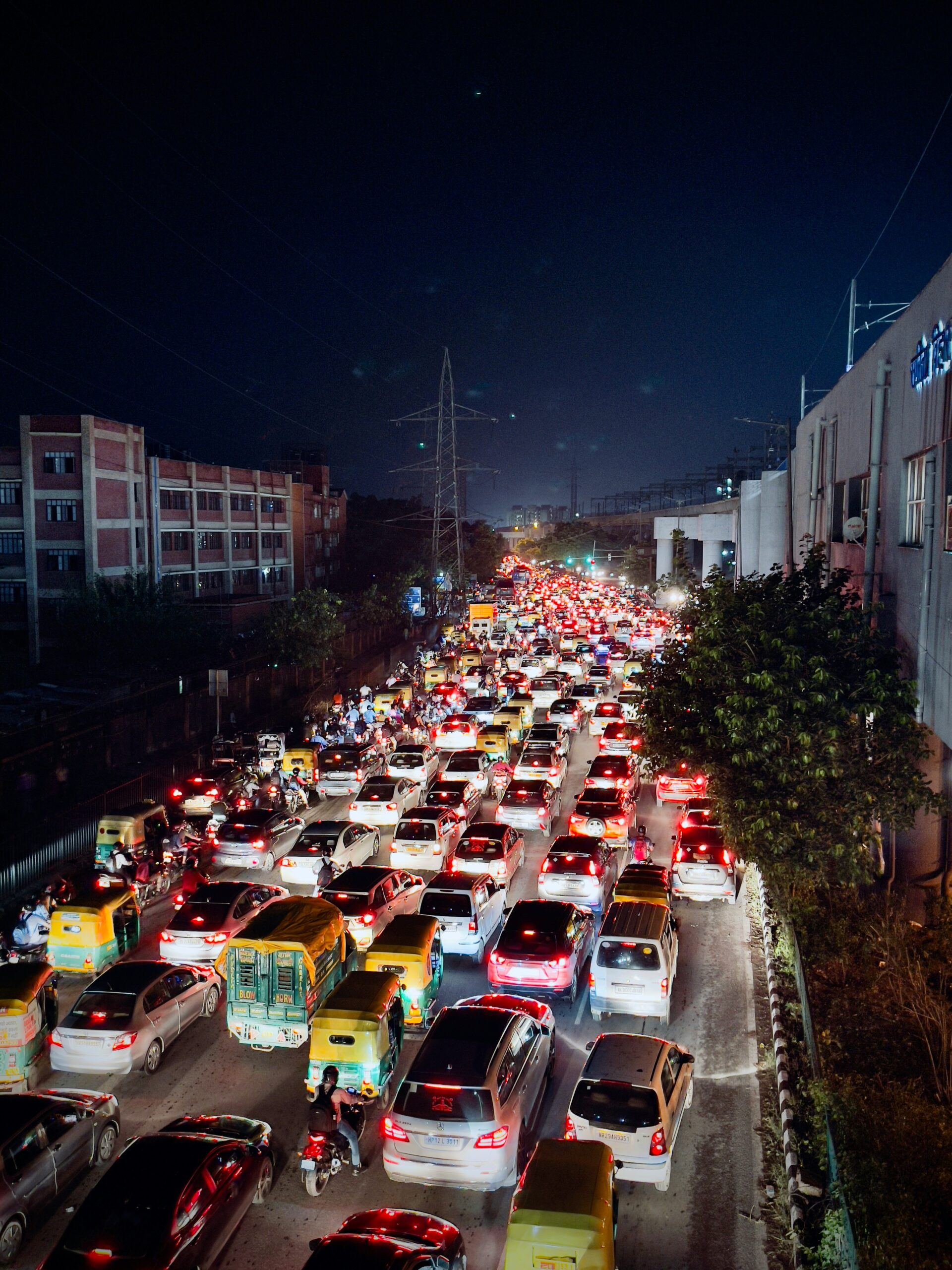Karachi Traffic Problem Karachi’s Deadly Traffic Chaos: One Killed, Three Injured as Accidents Surge Across the City
Karachi, Pakistan’s largest metropolitan city, continues to face alarming road safety challenges as reckless driving, over-speeding, and a lack of effective traffic management claim more lives each week. On Thursday morning, yet another tragic accident occurred in the Korangi Industrial Area, leaving one person dead and three critically injured. This latest incident has reignited debates about Karachi’s worsening traffic discipline and the urgent need for long-term reforms.
Karachi Traffic Problem Rising Road Accidents in Karachi – A Disturbing Trend
Over the past few years, Karachi has seen a consistent rise in traffic-related fatalities. According to official data from the Sindh Traffic Police, more than 1,000 people lose their lives in road accidents annually within the city limits. The majority of these tragedies occur due to speeding buses, untrained drivers, and a complete disregard for traffic laws.
Eyewitnesses to the recent crash in Korangi reported that a fast-moving passenger bus lost control while overtaking another vehicle, hitting a motorcycle and a rickshaw. The impact was so severe that one motorcyclist died on the spot, while three other victims were rushed to Jinnah Hospital in critical condition.
The scene of the accident quickly drew a crowd, with local residents blaming both the authorities and the drivers for the chaos on Karachi’s roads. Many expressed frustration that despite repeated promises of reform, the situation only seems to be getting worse.
Karachi Traffic Problem Lack of Law Enforcement and Poor Infrastructure
Experts say that the ongoing traffic problem in Karachi is a result of a combination of poor infrastructure and weak law enforcement. Many roads in the city are uneven, riddled with potholes, and lack proper signage or lane markings. Traffic signals at key intersections often remain out of order for days, creating confusion among drivers.
Furthermore, traffic police presence is minimal in many high-traffic zones. “Drivers break signals right in front of traffic cops, and nothing happens,” said Ali Hussain, a commuter who travels daily between Saddar and Korangi. “Until there’s strict punishment for violations, people will continue driving carelessly.”
According to data shared by the Citizens-Police Liaison Committee (CPLC), nearly 60% of Karachi’s road accidents involve public transport vehicles such as buses, minibuses, and rickshaws. These drivers often work long hours under pressure, with little regard for passenger safety.
Karachi Traffic Problem Over-Speeding and Reckless Driving: A Deadly Combination
One of the major causes of fatal road accidents in Karachi is over-speeding. With poorly trained drivers and no effective speed monitoring system, it is common to see vehicles racing on city roads, especially late at night. Many bus operators compete with each other to pick up passengers quickly, leading to aggressive driving behavior.
Traffic safety analysts suggest that the lack of an efficient public transport system forces thousands of commuters to rely on private buses and motorbikes, which increases congestion and accident risks. As the city expands, roads are failing to keep up with the growing population and vehicle count.
Karachi Traffic Problem Voices of the Victims and Local Residents
The recent accident has left families devastated. Relatives of the deceased have demanded justice and called on the government to take immediate steps to prevent further loss of life. “We want these reckless drivers punished,” said one family member. “Every few days, someone’s loved one dies on these roads, and nothing changes.”
Local residents also complain that there is little to no emergency response at accident scenes. In many cases, injured victims are transported to hospitals by bystanders because ambulances arrive late or fail to show up altogether.
Karachi Traffic Problem Government’s Response and Possible Solutions
In response to growing public outrage, Karachi’s traffic police have announced that a special operation will be launched to target over-speeding and signal violations. Officials have also stated that new digital monitoring systems and cameras will soon be installed at key intersections to detect offenders automatically.
Urban planners, however, argue that enforcement alone won’t solve the problem. They emphasize the need for better infrastructure, driver education, and awareness campaigns. “You can’t fine your way out of a broken system,” said traffic consultant Engr. Kamran Shah. “We need proper planning, strict vehicle fitness standards, and safe pedestrian zones.”
A Call for Responsible Driving
While government intervention is necessary, many experts stress that the first step toward safer roads must come from the public itself. Every driver needs to follow traffic signals, wear helmets, avoid using mobile phones while driving, and respect speed limits. A cultural shift toward responsibility is vital for reducing road accidents in Karachi.
Conclusion
Karachi’s traffic problem is not just a matter of inconvenience — it’s a crisis that affects thousands of lives each year. Until meaningful reforms are implemented and citizens start taking driving seriously, tragedies like the one in Korangi will continue to occur.
As the city struggles to modernize its roads and enforce safety measures, the question remains: how many more lives must be lost before Karachi’s traffic system is fixed?
